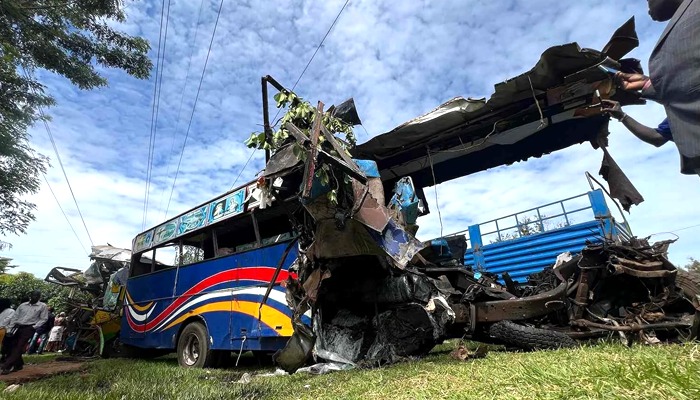A PILOT on a doomed Chinese passenger plane may have passed out as the plane began to plummet, before briefly regaining consciousness as they attempted to save it, according to an expert.
The wreckage of a China Eastern Airlines Boeing 737-800 that crashed in the southern Chinese province of Guangxi with 132 people on board is still being searched for by emergency crews.
Rescuers have found no survivors after a terrifying video showed the passenger jet taking a nosedive just before the sickening crash.
Following Monday’s crash, more than 600 emergency responders are said to be at the crash site in a remote location.
Flight MU5735 took off from Kunming at 1.11 p.m. local time (5.11 a.m. GMT) and was scheduled to land in Guangzhou at 3.05 p.m.
The plane abruptly lost altitude, dropping thousands of feet in a matter of minutes, just as it was about to begin its descent.
It briefly regained altitude at around 9,000 feet before crashing to the ground at an estimated 350 miles per hour in a hilly wooded area near Wuzhou.
Boeing 737-800s, like China’s aviation industry, have an excellent safety record.
The last major plane accident in China occurred in August 2010, when a flight from Harbin crashed in northeast Yichun during foggy weather, killing 42 people.
China Eastern, one of the country’s three major airlines, has grounded all of its Boeing 737-800s as a precaution and established a hotline for anyone seeking information about those on board.
It issued a statement expressing “deep condolences for the passengers and crew members who died.”
The Boeing 737-800 is not the same as the Boeing 737 MAX, which was involved in two fatal crashes in a matter of months.
A flaw in the plane’s Manouvering Characteristics Augmentation System (MCAS), an in-built flight stabilisation programme, resulted in two crashes, Lion Air Flight 610 and Ethiopian Airlines Flight 302, killing 346 people.
Sally Gethin, an aviation expert, told The Sun Online that the circumstances surrounding today’s shocking crash are very different from those surrounding the Boeing 737 MAX crashes.
“The 737-800 has an especially good safety record,” she explained. “There are thousands of them operating all over the world, with about 1,000 in the United States.”
“However, the fact that China Eastern Airlines is grounding all of those planes as a precaution suggests that they are concerned about the aircraft’s safety.”
Although Ms Gethin stated that it is “too soon to speculate” on the exact cause of the crash, she suggested that the plane’s rapid descent from a cruising altitude of 29,000 feet could have been caused by a tail malfunction.
She stated: “If the tail sheared off before the nosedive, the plane would lose all aerodynamics because it cannot function without the rudder in the tail. At this point, nothing can be ruled out.”
According to Chinese sources, the plane’s final flight was piloted by three people: two experienced pilots and one trainee.
According to reports, the pilot had approximately 7,000 hours of flight time, while the co-pilot had 30,000.
Having a more experienced co-pilot than the pilot already strikes Gethin as “unusual,” though no explanation has been given as to why this may have occurred.
A trainee pilot with only a few hundred hours of flight time sat in the jumpseat.
According to Gethin, the nine crew members and 123 passengers would have faced a terrifying two-minute plunge as the g-force sent blood rushing to their heads and knocking them out.
However, the graph, which shows the plane’s altitude holding steady for a brief period of time, suggests to her that there was a “10 to 20-second spell where one or more of the pilots regained consciousness and attempted to save the plane” before it plunged to its death.
The plane’s final nosedive, captured on video and widely shared, appears to have begun at around 8 to 9,000 feet, according to preliminary flight data.
Gethin speculates that everyone on board “would have been unconscious” during the final plunge.
Although she is quick to point out that there has been no evidence of “foul play” or a deliberate crash, Gethin says pilots can experience what is known as the “startle effect.”
She elaborated: “Pilots receive extensive training, much of it in simulators. In the real world, however, unexpected events can overwhelm or disorient them.
“This is known as the startle effect, and it is extremely difficult to train for.
“Even experienced pilots can be caught off guard, which causes them to make poor decisions. There are now efforts to recognise this and provide additional training.”
The point at which the plane’s descent began is the same as the point at which flight MU5735 began its descent – both from 29100.
Most plane crashes happen during takeoff or landing, which adds to the mystery surrounding the incident in southern China.
Gethin adds that planes falling into a nosedive are almost unheard of because they are far more aerodynamic than helicopters, and even if they lose power, they should still be able to land.
She cites US Airways Flight 1549, in which a pilot successfully landed his plane on New York’s Hudson River after birds flew into both engines.
Pillot Chesley Sullenberger was able to safely glide onto the water without using any power, saving the lives of all 155 people on board.
Flight MU5735, on the other hand, came down vertically, indicating that a so-called “stalled flight” was either unsuccessful or not attempted at all.
[embedpost slug=” a-terrifying-video-shows-a-china-plane-nosedive-in-the-final-seconds-of-its-flight/”]





















